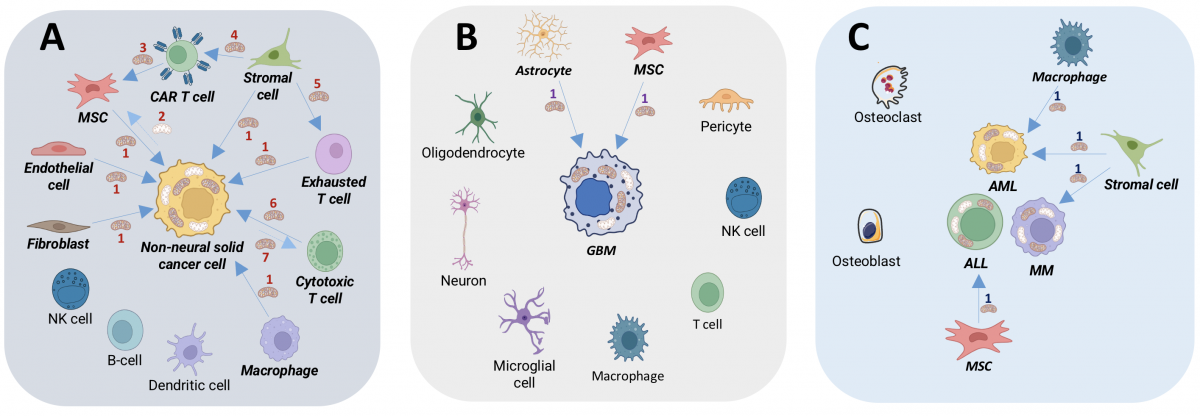
Czech scientists' groundbreaking discovery: horizontal mitochondrial transfer is a key process in tumor biology
Horizontal mitochondrial transfer is the common denominator of more than 20 types of cancer. A team of scientists led by Professor Jiří Neužil from the Institute of Biotechnology, Academy of Sciences of the Czech Republic, in the BIOCEV has spearheaded a study summarizing the findings of this process in the prestigious journal Cancer Cell. The publication may motivate the development of new approaches in anti-cancer therapy.
Horizontal mitochondrial transfer (HMT) is the process by which mitochondria are moved between cells - usually with some impact on the cell that gains mitochondria and sometimes on the cell that loses them. Mitochondria act as the cell's powerhouse, as they carry out important biochemical processes.
A publication from the latest research by a team from the Institute of Biotechnology of the CAS describes that HMT is an integral part of cancer. Cancer cells use it to acquire mitochondria from the surrounding environment, thereby enhancing their aggressive properties while weakening the body's immunity. This mechanism is so fundamental that it appears to be a universal feature of more than 20 types of cancer.
"Recent research has shown that horizontal mitochondrial transfer is common to many tumours and is very important for their formation. The fact that this is a universal mechanism points to its fundamental role in cancer biology and opens the way to new therapeutic strategies," says Jiří Neužil, head of the research team at the Institute of Biotechnology of the CAS.
The study, which summarizes the latest findings on horizontal mitochondrial transfer (HMT) in cancer biology and their clinical relevance, was published in Cancer Cell, one of the most prominent scientific journals.
Cells can recover "stolen" mitochondria
One of the most interesting aspects of HMT is its role in the interaction between tumor cells and the immune system. Recent studies show that tumor cells acquire mitochondria not only from stromal cells (components of tumour microenvironment) but also from cytotoxic T lymphocytes, thereby weakening them and depriving them of their anticancer activity. Very interestingly, these "exhausted" T cells can regain mitochondria from stromal cells and restore their cytotoxic function, which presents a dynamic battle between the tumor and the immune system.
"The tumour tries to weaken the immune system to penetrate normal tissue, and the immune system has other ways to prevent the cancer cells from such penetration. And this happens in real systems based on HMT and mitochondrial shuttling using intercellular nanotubes," says Jiří Neužil.
The results of the study open new paths for understanding how tumours escape immune surveillance and may therefore contribute to the development of innovative approaches in anti-cancer therapy.
The paper follows up on a groundbreaking study published ten years ago by Jiří Neužil and Mike Berridge of the Malaghan Institute of Medical Research in New Zealand. Among other things, it describes how HMT research is developing at an unprecedented pace, enabled by advances in methodologies such as spatial transcriptomics and high-resolution proteomics at the single-cell level.
Link to the article:
Berridge MV, Zobalova R, Boukalova S, Caicedo A, Rushworth S, Neuzil J. Horizontal mitochondrial transfer in cancer biology: potential clinical relevance. Cancer Cell, in press. https://www.cell.com/cancer-cell/abstract/S1535-6108(25)00081-9?
A. Solid tumours, except for tumours of the nervous system
B. Tumours of the nervous system
C. Haematological tumours













